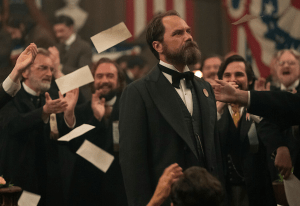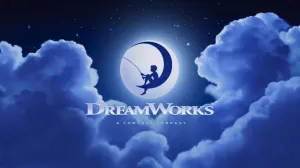Studio Ghibli has been around for decades, and its story endure the test of time with ease. From My Neighbor Totoro to Princess Mononoke, the brand has challenged animation time and again with its gorgeous tales. Of course, director Hayao Miyazaki is behind many of the studio’s best works, and few are more famous than Spirited Away. The ever-popular film is one of the best in cinema, and this month, Studio Ghibli fans can see Spirited Away in a way they’ve never seen before.
Videos by ComicBook.com
Thanks to Ghibli Fest and GKIDS Films, Spirited Away: Live on Stage has come to theaters across the United States. The production, which director John Caird oversaw in Japan, brings Miyzaki’s magical world to live on stage for all to see. Recently, ComicBook.com had the chance to speak with Caird about the film’s stateside release, and it was there the director spoke about the highs and lows that come with making a story like Spirited Away your own.
—
Question: First, I’d like to ask you how the notion of bringing Spirited Away to the stage came around? What was that pitching process like?
John Caird: I’d done big musicals [at the Imperial Theatre] like Les Mis and Knight’s Tale and huge, huge musical theater ventures. I just thought I’d love to do something authentically Japanese there, and so I was really looking for a potential Japanese project that would fill a massive theater. I started to think about what might that be. What might be the great big Japanese story that would appeal to a big audience? And almost immediately I started thinking about the greatest Japanese storyteller alive today, Hayao Miyazaki. That made me think, well, which of his movies could be adaptable most immediately? I thought that Spirited Away was the one that presented itself as the best candidate.
Q: What was your level of familiarity with Miyazaki’s body of work beyond Spirited Away going into this project?
Caird: Yeah, I’m a big fan of all of Miyazaki’s work because my wife’s Japanese and we have half-Japanese children. I’ve been watching Ghibli films since every time when they came out, I’d been watching. I first saw Spirited Away 2001 or whatever when it first came out. And so I followed Miyazaki’s work from the earliest days.
Q: I wanted to ask, what were some of the biggest challenges that you faced in getting this production ready for something that could be done on stage?
Caird: Well, I suppose the challenges are obvious and the biggest challenge was putting the bathhouse on stage. But my choice of collaborators, I suppose I was very lucky in that I got people for whom that sort of challenge is their bread and butter. Jon Bausor as designer and Toby Olié as the puppet master, and Jiro Katsushiba, the lighting designer, they all collaborated together with me to create the world of the bathhouse. And then finding the right way of using puppets to create all the more extraordinary non-human characters. That was the other big challenge, I suppose.
Q: I wanted to know if you could talk a little bit about the process of getting the puppetry nailed down for the stage production. What was that situation like behind the scenes?
Caird: What we did almost immediately after we decided to push the green light on this project was that we created a two-week workshop in London. So I could work with my designer and my puppet master and his team on creating a lot of template puppets so we could see how we would do camera Kamajī’s arms, how we would do a flying dragon, how we would do an expanding Yubaba face, all the things we see in the movie needed to be proved in a workshop. We had a lovely team of English puppeteers working with us, and also just deciding on how to do things like how to fly Chihiro through the air. Because I thought, I don’t want to do Peter Pan. I don’t want to use wires because it’s such a clunky way of doing things and it’s technically dangerous and it’s just not fun. So how to turn Chihiro, herself, into a puppet so that she can fly through the air? Things like that, we explored in the workshop and it gave us a lot of courage because we thought actually this is going to be fun to share with an audience.
Q: Obviously seeing something on stage and seeing it live as a production is very different from seeing something that was filmed. I wanted to ask you, what was your reaction to learning this production that you put on stage would be shown in theaters?
Caird: Well, I didn’t know when we first were putting it on that we would be filming it. That was a decision that came later. We had to get the theater show right first, and then having got it there, we thought, “Oh, we’ve got to record this. We could screen this.” And then once we’d screened it, we thought, “Well, we need to share this with a wider audience.” So then we had to work on the English translations of the Japanese dialogue and all the other things you need to do to put it together. But it wasn’t imagined as a film to start with. Obviously, it’s a live theater show, and what the American audience will be seeing is a filmed version of an intensely live event, which is never the same from one night to the next. So you are catching sight of a never to be repeated moment in both films because the next night Mone [Kamishiraishi] would do something different with the character and Kanna [Hashimoto] would do something different with her character.
Q: And speaking of the two different leads, what can fans of the United States look forward to in seeing either of these performances in theaters?
Caird: Well, they’re both wonderful. They’re very different actors. Mone is a wonderful sort of little woman character. She’s marvelous. She’s just played Jane Eyre for me in the musical Jane Eyre that I wrote in Tokyo. She was an absolutely brilliant Jane Eyre and she’s a wonderful actress. Kanna is far more boyish. She’s like a little tomboy. But those are both elements that are in Chihiro. There’s a wonderful sort of maternal element in Chihiro as a character, the way she cares for Kaonashi, the way she cares for Haku, a relationship [inaudible 00:07:16]. But there’s also the tomboy part, the ability to scale the outside of a building on a dangerously rickety ladder, and all the other physical challenges that she goes through in the film. So both of the actors, in this case, have got great strengths that they can use for their performances. It’s worth seeing them both, I have to say, because they’re both brilliant. And of course, other principal roles in the show are doubled. All the principals are double-cast.
Q: If you had to concentrate and boil down the differences in these actresses’ performances, what would you say their unique points are?
Caird: Yeah, it’s difficult, isn’t it? Because of course, being good actors, they’re just using themselves in the characters, both Kotaro and Hiroki, both playing a Haku that’s based very much based on themselves as young men. And of course in this case… In the movie, it’s very much a relationship between a boy, a very young boy and a little girl, but because we’re using adult actors, there is a different chemistry going on between them. And you obviously get different chemistry depending on which actors you are using. You get a sense of attractiveness between them that is different depending on who the actors are, because all good actors, they’re drawing on their own feelings when they’re acting with each other.
Q: Finally, why do you feel like Studio Ghibli films and specifically Hayao Miyazaki stories lend themselves so seamlessly to live stage productions despite the fantastical magical realism of it all?
Caird: I think because they’re just really good stories. Yeah, at the heart, Miyazaki he’s a great animator, he is a great artist, but his art is always in the service of the story. He’s a great storyteller. And it is just that he tells his stories not through words. And so the secret of getting them right on the stage is to make sure that the imagery, the visual imagery, is faithful to Miyazaki’s vision and then everything else follows. So whether you are doing a cat bus or whether you are doing a Kaonashi who grows bigger and bigger and bigger and starts eating frogs, you’ve got to believe in his vision and find a way of putting his vision on stage, and then you’re telling the story he’s telling. It’s really as simple as that.
—
Spirited Away: Live on Stage is showing in theaters on April 23rd and 25th with performances by Hashimoto. Additional screenings on April 27th and May 2nd will showcase Kamishiraishi’s performances.
Will you be checking out this filmed stage production? Share your thoughts with us in the comments section below or hit me up on Twitter @MeganPetersCB.








